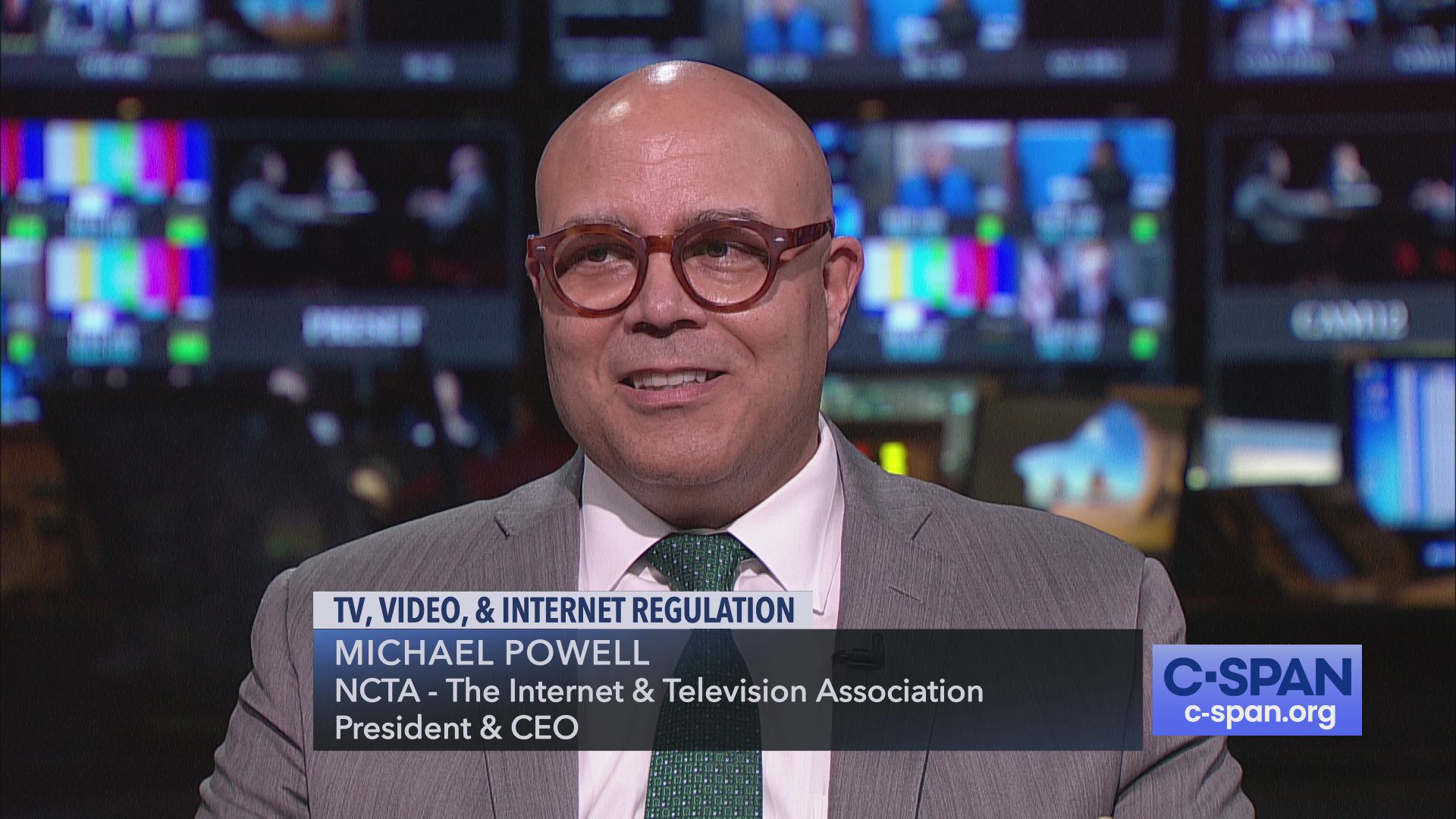Frenemies List: Broadcasting &/vs. Cable
Broadcasters are going into this week’s NAB Show in Las Vegas allied with cable operators on some issues but at odds over a number of other key ones, a love-hate relationship that mirrors the historic tensions between competing services that have needed each other.
In an interview with C-SPAN’s The Communicators series on another topic (the tension between internet-service providers and edge providers), NCTA–The Internet & Television Association president and CEO Michael Powell pointed out that the relationship between different parts of the communications ecosystem is, well, complicated.

In a converged market, he said, everyone is both a competitor and a collaborator, so the stovepipe model of walled-off services has given way to a frenemies model.
That holds true with broadcasting and cable, which are clearly co-dependent, given that broadcasters have must-have content for cable platforms and cable now is how most people receive their local stations, so it delivers the lion’s share of audience for that ad-driven service.
Friends Sneak Up on You
“You can’t hold a grudge very long,” Powell said, for “tomorrow we may have to be friends.” Or even today.
On the frenemies front, there is the debate over how to repurpose some of C-band satellite spectrum and even some fringe elements of must-carry and retransmission-consent regulations to agree on, though elsewhere on that front cable operators and broadcasters are battling big time.
The smarter way to stay on top of the multichannel video marketplace. Sign up below.
As for the C-band, broadcasters and cable operators are on the same page when it comes to baseline protections for that key satellite spectrum.
The C-band is currently used for satellite delivery of cable and broadcast network programming to cable headends and television and radio stations. The FCC wants to open that spectrum up to wireless broadband to help close the digital divide and promote 5G, both prime directives, so cable operators and broadcasters are on the same page when it comes to ensuring they are protected in the rush to 5G.
Cable operators are calling on the FCC to make sure incumbent services are protected in the commission’s effort to open up more spectrum for wireless broadband.
In comments on the FCC’s plan, NCTA said it needs to get more data about how those incumbent services are protected before it makes any final decision about modifying the band. That’s because such disruption could “significantly disrupt the television content distribution ecosystem to the detriment of more than 100 million U.S. television households.”
ACA Connects (formerly the American Cable Association) told the FCC that while it supports more efficient and flexible use of the C-band spectrum, if the FCC does not protect incumbent users there could be an outsized effect on smaller operators in rural areas where fiber is not an option.
Broadcasters’ concerns track pretty closely.
The National Association of Broadcasters told the FCC, “If, in its haste to slip on a pair of running shoes the commission focuses only on reallocating as much spectrum as possible, it could inadvertently stifle consumer benefits.” For broadcasters, those potential benefits include the move to 4K quality broadcasts made possible by the migration to the ATSC 3.0 transmission standard.
But the new standard is one of those areas where broadcasters and cable operators diverge.
NCTA, ACA Connects and the American TV Alliance all have issues with the FCC’s initial order laying out the framework for the ATSC 3.0 rollout, including what cable MSOs saw as a vague simulcast requirement. The NAB wants a flexible standard for waivers of the FCC’s requirement that TV stations’ current ATSC 1.0 transmission and next-generation ATSC 3.0 signal be simulcast.
The FCC is refereeing that one and should have a decision soon, chairman Ajit Pai has signaled.
What to do about retrans and must-carry, if anything, is arguably the biggest digital divide between cable and broadcast.
The NAB and NCTA actually came together on a compromise proposal to streamline must-carry/retrans elections, which was to allow for email rather than snail-mail elections. While that will save a few trees, the forest remains contested ground. Broadcasters are fighting to maintain the status quo of mandatory carriage and the ability to leverage retrans blackouts, but cable operators say that is a government thumb on the scale that needs to come off.
Star-Crossed STELAR
The NAB is fighting an uphill battle to get Congress to sunset the compulsory license that allows satellite operators to deliver distant signals to local markets that lack a network affiliate, or in a handful of the smallest markets where DirecTV chooses not to carry any at all.
The Satellite Television Extension and Localism Act (STELAR) legislation that authorizes the distant-signal compulsory license expires every five years, unless reauthorized by Congress. STELAR also provides a carve-out from retransmission-consent rules for those distant signals and requires that retrans negotiations be in good faith.
Meanwhile, cable operators are pushing just as hard for renewal because they are hoping the legislation will be a vehicle for retrans reforms, as it was last time around, including renewing the FCC’s enforcement of good-faith retrans negotiations and extending the agency’s prohibition on coordinated retrans negotiations among non-commonly owned TV stations in a market to all stations from just the top four in the market.
Cable operators are hoping to add third-party arbitration and a ban on blackouts to that list of reforms.
Contributing editor John Eggerton has been an editor and/or writer on media regulation, legislation and policy for over four decades, including covering the FCC, FTC, Congress, the major media trade associations, and the federal courts. In addition to Multichannel News and Broadcasting + Cable, his work has appeared in Radio World, TV Technology, TV Fax, This Week in Consumer Electronics, Variety and the Encyclopedia Britannica.

